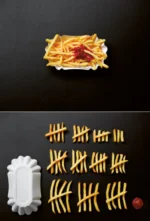Topology is the blueprint of a directed graph, which serves an application software in answering queries whether two objects represented in the model are related to each other or not. How these relationships manifest themselves either as a fact or as a chain of facts is of particular importance. Another critical issue is to prove that two objects are not related because the proof is only possible if all paths through the graph are known. The relations which determine the contents of the graph can be any association like cause/effect, before/after, older/younger, caller/callee, or send/receive.
During the next couple of weeks we will discuss the fundamental invariants of the topology of any directed graph, including those which are cyclic, and the intrinsic structure defined by it.
- The topology of a directed graph is a function of the relations it contains. It is unique, and it does not change unless the set of relations is changed.
- The graph's structure is materialized as a nested composition of its sub-graphs.
- A directed graph can be decomposed into a unique set of sub-graphs, where each object belongs to one and only one sub-graph.
Wikipedia says, "an algorithm is a finite sequence of rigorous instructions, typically used to solve a class of specific problems or to perform a computation." ... "In contrast, a heuristic is an approach to problem-solving that may not be fully specified or may not guarantee correct or optimal results, especially in problem domains where there is no well-defined correct or optimal result".
In the course of our discussion, we will develop an incremental algorithm which can explicate and encode the topology and structure of the respective graph. The encoded graph is an exact copy of the original, as if one would draw it directly into the computer. They, the graph's picture and its digital copy, are equivalent from topological, structural, and navigational perspectives.
The algorithm uses only the relations, no matter in which order they are introduced to it. And it uses only one rule, the rule of transitivity, to discover (deduce) new facts based on the ones which are already known to it. Please refer to the Introduction page for a list of planned chapters.
As our logo suggests, there is a short path from jumble to order.
We should simply follow it, stick by stick, in order not to say edge by edge.
We should simply follow it, stick by stick, in order not to say edge by edge.

